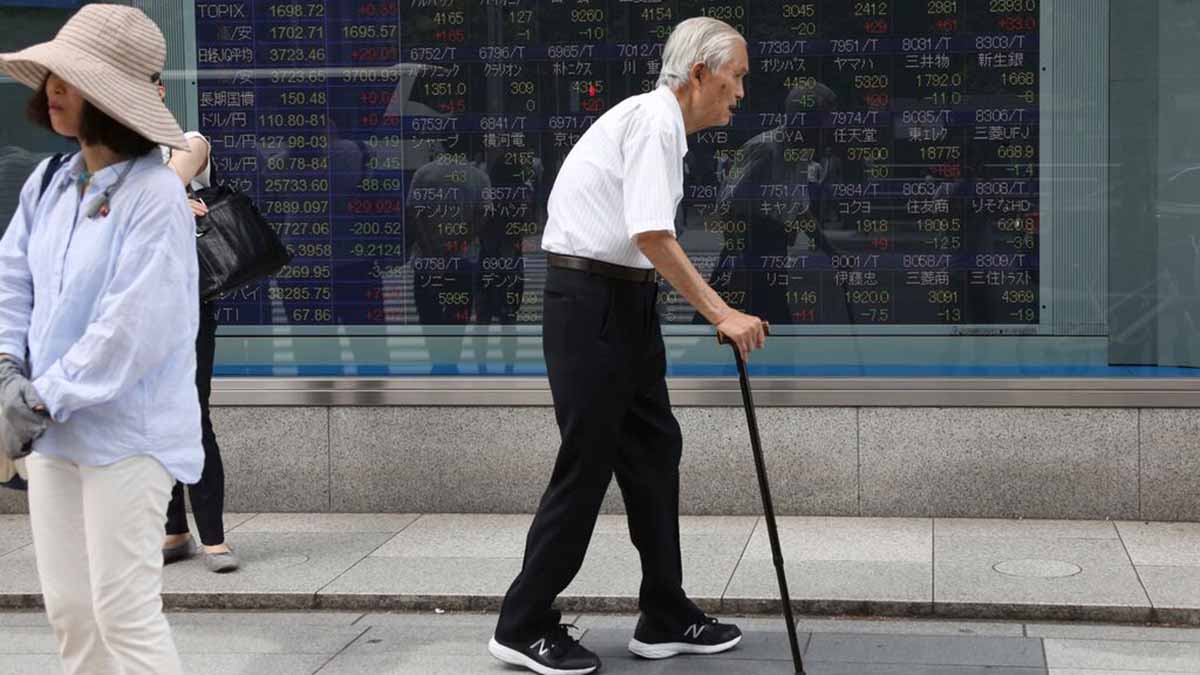In a country renowned for its unparalleled technological advancements, a harrowing reality lurks in the shadows. According to data from the National Police Agency, approximately 68,000 elderly individuals, aged 65 and above, are found to die alone and unnoticed in their homes each year in Japan. This stark statistic reveals a profound and heartrending solitude amid the bustling high-tech society.
According to a Kyodo news agency report on Tuesday, preliminary statistics released by law enforcement indicate that between January and March, a total of 21,716 individuals across the country experienced what is referred to as “lonely deaths.”
Among this demographic, 17,034 individuals, constituting nearly 80 per cent of the total, were aged 65 and above. The data shows that the highest number of deaths among people living alone, including suicides, occurred in those aged 85 and older, with 4,922 cases reported. In the age bracket of 75 to 79, there were 3,480 recorded deaths, while individuals aged 80 to 84 accounted for 3,348 solitary deaths. The number of individuals aged 70 to 74 who passed away under such circumstances totalled 3,204, followed by 2,080 individuals aged 65 to 69.
What is a ’lonely death’ or ‘Kodokushi’?
‘Kodokushi’, meaning “lonely death” or “solitary death” in Japanese, refers to the phenomenon where individuals die alone and their deaths go unnoticed for extended periods. This issue is particularly prevalent in Japan, a country grappling with a rapidly ageing population and shifting social structures.
One of the primary factors contributing to ‘Kodokushi’ is Japan’s demographic landscape. The country has one of the oldest populations in the world, with a significant portion of elderly individuals living alone. As the number of elderly people continues to grow, so does the incidence of ‘Kodokushi’. Urbanisation exacerbates this problem, as many people reside in densely populated areas where social isolation can be severe despite the physical proximity of neighbours.
Social and economic factors
Social isolation is another critical factor in the rise of ‘Kodokushi’. Traditional extended family structures in Japan are weakening with many elderly people not living with their children or extended family members. This separation leads to increased loneliness and isolation. Additionally, cultural norms that emphasise self-reliance and not wanting to burden others can prevent individuals from seeking help further exacerbating their isolation.
Impact Shorts
More ShortsEconomic factors also play a significant role in ‘Kodokushi’. Financial strain, such as low pensions and inadequate savings, can contribute to neglect and isolation among the elderly. Economic hardships may limit access to necessary healthcare and social services. Moreover, the rise of precarious employment and the gig economy means that many younger individuals face economic insecurity reducing their ability to support elderly family members.
The phenomenon of ‘Kodokushi’ has significant implications for public health, social responsibility and policy making. It highlights the need for better mental health support and healthcare services for the elderly. The issue also raises questions about societal responsibility toward the ageing population and the importance of fostering strong community bonds.
How Japan is dealing with ‘Kodokushi’
In response to this growing issue, various technological and social solutions are being explored. Community initiatives, such as regular check-ins by local governments and NGOs, aim to create stronger support networks for the elderly. Innovations in technology, including smart home devices, wearable health monitors and social robots, are being developed to monitor the health and well-being of individuals living alone. Additionally, government policies are being designed to address both the symptoms and underlying causes of ‘Kodokushi’, including improved social welfare programmes, better healthcare access and initiatives to combat social isolation.
According to The Asahi Shibun, on 1 April, Japan put into effect a law aimed at combating loneliness and isolation, which reportedly affects around 39 per cent of the population. This legislation frames loneliness and isolation as societal issues, mandating local governments to form regional councils with support groups for individuals experiencing loneliness. Furthermore, the central government plans to train specialized supporters in each area to assist those affected by loneliness while also encouraging the development of a national database cataloguing effective strategies to tackle this issue. The law emerged from worries that the COVID-19 pandemic could exacerbate feelings of loneliness.
Japan has company in tragedy
In South Korea, a significant number of individuals, including many in middle age and living in isolation, are perishing alone each year, frequently remaining unnoticed for extended periods. The Korean term for this phenomenon, akin to Japan’s ‘Kodokushi’, is ‘godoksa’. According to South Korean law, ‘Godoksa’ refers to a situation where someone living alone, devoid of familial or relational connections, passes away due to suicide or illness, with their body discovered only after a specified period has elapsed.
Over the past ten years, the rise in lonely deaths has captured the nation’s focus, particularly intensifying during the COVID-19 pandemic, according to CNN. This phenomenon stems from various factors, such as the nation’s demographic challenges, deficiencies in social welfare, poverty rates and increasing social isolation.
The Ministry of Health and Welfare’s report, released in 2021, disclosed a rise in solitary deaths in South Korea, from 2,412 cases in 2017 to 3,378 cases. In tandem with this concerning trend, the South Korean government implemented the Lonely Death Prevention and Management Act in 2021. This legislation mandates periodic updates every five years to develop proactive policies aimed at preventing such isolated deaths.
‘Kodokushi’ or ‘Godoksa’ is not just a Japanese or South Korean issue but reflects a broader global trend in ageing societies. The fundamental principle is clear: elderly and lonely individuals should not be abandoned but rather provided with comprehensive care in line with the basic tenets of humanity.
)